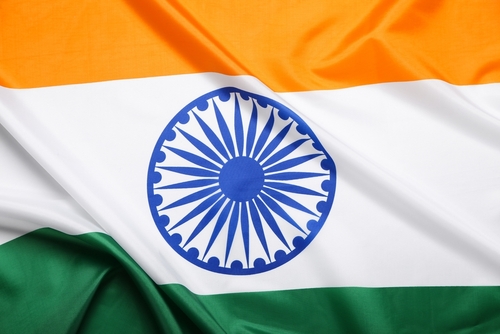Time zones seem straightforward until you encounter the places where they definitely aren’t. While most of us think time zones follow neat, orderly lines across the globe, reality tells a different story. Political decisions, geography, and cultural preferences have created some truly puzzling time zone situations that can leave even seasoned travelers scratching their heads.
Understanding these time zone quirks becomes essential when you’re sending money internationally or coordinating with family across borders. A simple money transfer can become complicated when you’re not sure what time it actually is in your recipient’s location. Let’s explore the places where time zones get genuinely weird and what you need to know about them.
China’s Single Time Zone Experiment

China spans five geographical time zones, yet the entire country operates on a single time zone: China Standard Time (CST). This political decision means the sun rises as late as 10 AM in western regions like Xinjiang, while eastern cities like Shanghai experience more conventional daylight hours.
The practical implications affect daily life significantly. In Kashgar, located in far western China, noon feels more like mid-morning based on the sun’s position. Local residents often operate on unofficial “local time” that differs from official Beijing time by up to three hours.
For international money transfers to China, this unified system actually simplifies timing. You only need to remember one time zone regardless of where your recipient lives in the country.
India’s Half-Hour Difference

India Standard Time (IST) sits at UTC+5:30, placing it 30 minutes ahead of its western neighbors and 30 minutes behind its eastern ones. This half-hour offset creates unique coordination challenges for international business and personal communications.
Nepal adds another layer of complexity by operating 15 minutes ahead of India at UTC+5:45. These fractional time zones mean standard world clocks often don’t display the correct local times for these regions.
When sending money to India or Nepal, double-check your timing calculations. Banking hours and transfer processing times require careful attention to these non-standard offsets.
Australia’s Time Zone Maze

Australia manages to pack multiple time zone complications into one continent. The country uses three main time zones, but several states and territories add their own variations through daylight saving time adoption.
Western Australia operates on Australian Western Standard Time (AWST) at UTC+8. Central states use Australian Central Standard Time (ACST) at UTC+9:30. Eastern states follow Australian Eastern Standard Time (AEST) at UTC+10.
The complexity multiplies during daylight saving periods. Not all states observe daylight saving time, and those that do don’t always start and end on the same dates. South Australia and the Northern Territory create additional confusion with their half-hour offsets from the eastern and western zones.
Russia’s Time Zone Reforms

Russia has undergone multiple time zone changes in recent decades, creating confusion for anyone trying to track the country’s current time structure. The nation spans eleven time zones, making it the country with the most time zones in the world.
Recent reforms consolidated some zones while maintaining others. Kaliningrad operates two hours behind Moscow time, while Vladivostok runs seven hours ahead. These changes have affected business operations and international communications across the vast country.
Understanding Russia’s current time zone map becomes crucial for international money transfers, especially given the country’s size and the varying processing times across different regions.
Pacific Island Peculiarities

Several Pacific island nations have created unique time zone situations based on economic and political relationships rather than geographical logic.
Samoa made headlines by jumping across the international date line in 2011, moving from UTC-11 to UTC+13. This change placed Samoa 24 hours ahead of American Samoa, despite the islands being only 120 miles apart.
Kiribati stretches across three time zones but officially operates on a single time for administrative convenience. The Line Islands, part of Kiribati, use UTC+14, making them among the first places on Earth to experience each new day.
The International Date Line’s Irregularities
The international date line doesn’t follow a straight path along the 180-degree meridian. Political and economic considerations have created several deviations that affect how dates change across the Pacific.
These irregularities mean some island nations experience date changes that seem geographically illogical. Tonga and Fiji are ahead of Hawaii by 22-23 hours, despite being relatively close in Pacific terms.
Why These Time Zone Quirks Matter
Understanding unusual time zones becomes essential for several practical reasons:
Money transfers require precise timing. Banking hours, processing times, and exchange rate calculations all depend on accurate time zone knowledge. A transfer initiated outside business hours might not process until the next business day.
Communication with family abroad needs careful coordination. Calling relatives during convenient hours requires understanding their local time, especially in regions with non-standard time zones.
Business operations across borders demand precise scheduling. Conference calls, deadline coordination, and project management become more complex when dealing with unusual time zones.

Frequently Asked Questions
Why don’t all countries follow standard time zones?
Countries often prioritize political, economic, or cultural unity over geographical time zone logic. China’s single time zone keeps the entire country synchronized for business and administration, while India’s half-hour offset reflects its position between standard time zones.
How do half-hour time zones affect international business?
Half-hour offsets complicate scheduling and require careful attention to timing. Standard world clocks may not display these times accurately, making manual calculations necessary for precise coordination.
What should I know about time zones when sending money internationally?
Always verify the recipient’s local time zone and banking hours before initiating transfers. Some regions have non-standard offsets or seasonal changes that affect processing times. Consider using services that clearly display local times for both sender and recipient locations.
Do these unusual time zones change seasonally?
Some regions with unusual time zones also observe daylight saving time, adding another layer of complexity. Australia’s various states, for example, may shift their already complex time relationships during different seasons.
Planning Your International Transfers
Time zone awareness becomes crucial when sending money to family abroad. Banking systems operate on local business hours, and transfer processing times depend on when institutions are open and operating.
Before sending money, verify your recipient’s local time and their bank’s operating hours. This simple step helps ensure your transfer processes quickly and arrives when expected. Many modern money transfer services display both sender and recipient time zones to eliminate confusion.
Consider establishing a routine that accounts for time zone differences. Regular transfer schedules work best when you understand peak processing times in your recipient’s location.
Time zones may seem like abstract concepts, but they directly impact how quickly your money reaches family members who depend on your support. Understanding these global time quirks helps ensure your international transfers happen smoothly and arrive when needed most.
